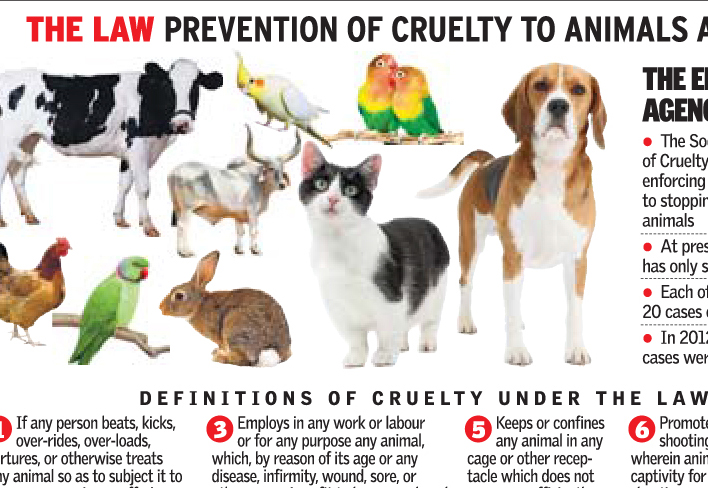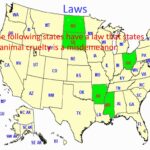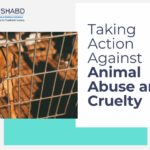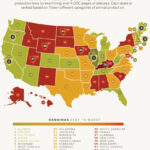As we navigate through the tumultuous socio-legal landscape of 2025, the specter of animal cruelty pervades discussions surrounding animal welfare and legal protections. Animal cruelty laws are designed to shield vulnerable creatures from maltreatment; however, ongoing debates question whether these regulations have evolved adequately to safeguard their interests in contemporary society. This article endeavors to delve into the nuanced layers of animal cruelty legislation, examining its efficacy, the various forms of abuse, and the burgeoning movements advocating for more robust protections.
Animal cruelty manifests in numerous insidious forms, ranging from neglect and abandonment to overt acts of violence and exploitation. Neglect, often characterized by failure to provide adequate food, water, shelter, or veterinary care, culminates in severe suffering for countless animals. Abandonment, a tragic outcome of irresponsible ownership, leaves defenseless pets to fend for themselves, potentially leading to starvation or injury. Overly aggressive practices in industries such as factory farming, entertainment, research, and the pet trade further exacerbate the plight of animals subjected to cruelty. Hence, a comprehensive understanding of what constitutes animal cruelty is pivotal for staunch advocacy and legal reforms.
In 2025, the existing framework of animal cruelty laws varies considerably across jurisdictions. While some regions have enacted stringent regulations, encompassing felony charges for abusive behaviors, others remain entrenched in outdated statutes that trivialize the matter. For example, in states like California, recent legislative efforts have established progressive norms, ensuring that violations can incur severe penalties, including imprisonment. Conversely, certain states retain archaic laws that treat animals as mere property, limiting judicial recourse for their suffering. This dichotomy in legislative strength underscores the urgent necessity for uniformity in the safeguarding of animal rights.
The disparity in animal cruelty laws has galvanized a wealth of activism aimed at galvanizing change. Advocacy groups tirelessly work to raise awareness and lobby for legal reforms. Campaigns emphasizing the moral imperative to protect animals have gained tremendous traction, leveraging social media platforms to highlight egregious cases of abuse that might otherwise escape public scrutiny. Illustrative instances of egregious cruelty often serve as rallying points, demonstrating the need for a paradigm shift in societal attitudes and legislative action.
Another crucial aspect to consider is the role of public education in combating animal cruelty. Increased awareness can catalyze change at both the grassroots level and within institutional frameworks. As communities become more educated about the signs of abuse and the emotional and physical traumas inflicted upon innocents, they can act as vigilant enforcers of the law. Workshops, seminars, and outreach programs aimed at all demographics equip individuals with the knowledge necessary to prevent and report animal cruelty. Education about responsible pet ownership and humane treatment fosters a culture that values compassion over indifference.
Moreover, as technology evolves, innovative solutions emerge to enhance animal protection efforts. Surveillance technologies and mobile applications now enable citizens to report instances of abuse more conveniently and swiftly. Some organizations have pioneered platforms that facilitate anonymous reporting, emboldening individuals who might fear repercussions for their involvement. By streamlining the reporting process, these initiatives can lead to faster intervention and perhaps deter potential abusers who recognize the increased vigilance in communities.
The intersection of animal rights and environmental justice also deserves attention, as a holistic approach to welfare recognizes the complexity of these issues. The urgent call to address climate change has profound implications for animal populations, particularly those in vulnerable habitats. Protecting wildlife not only preserves ecological balance but addresses systemic cruelty that stems from habitat destruction and exploitation. Therefore, advocacy that extends beyond domesticated animals to consider wildlife welfare is indispensable in fostering a genuinely compassionate ethos.
However, as we scrutinize the legal framework, there remains a pervasive challenge: enforcement. Even the most comprehensive legal statutes are rendered impotent without adequate enforcement mechanisms. A dire lack of resources, training, and commitment can lead to inconsistent application of the law. Underfunded animal control agencies struggle to investigate reports of abuse thoroughly, leaving many cases unaddressed. This gap highlights the necessity for governments to allocate proper funding toward enforcement agencies and resources dedicated to animal welfare.
Furthermore, the relationship between economic interests and animal cruelty laws warrants examination. Industries reliant on the use of animals often resist reforms that threaten profit margins, leading to political pushback against more stringent legislation. This tension underscores the urgent need for a societal reevaluation of the values underlying animal exploitation. Advocacy must strive to create a paradigm shift whereby animal welfare is prioritized not as an afterthought, but as a principle enshrined in our legislation.
As 2025 progresses, inquiries related to the strength of animal cruelty laws continue to provoke complex dialogues. There’s a burgeoning consensus that laws must evolve to adapt to the realities faced by millions of animals. The current legal landscape, rife with inconsistencies and gaps, demands a thorough reassessment and progressive reform. Armed with education, technological advancements, and a compassionate ethos, society is gradually inching towards substantial change. However, the road ahead requires not just awareness but unwavering commitment to action—action that transcends mere rhetoric and engenders actual, palpable change for those who cannot advocate for themselves.








